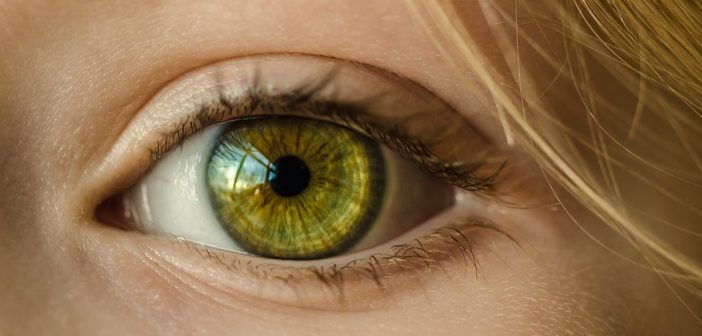For anyone who would like to bid farewell to their eyeglasses or contact lenses, LASIK could be the solution. LASIK is a surgical procedure that uses laser treatment to correct vision problems, such as astigmatism, nearsightedness, farsightedness and presbyopia. It is considered as a form of refractive surgery because it improves the refractive state of your eyes. Although there are other types of refractive eye surgery, LASIK is by far the most popular. In fact, there have been an estimated 21 million LASIK procedures performed in the U.S. since 2015.
An experienced, certified ophthalmologist should perform LASIK eye surgery. One of the first things an ophthalmologist will do is use either of two surgical tools to create a thin flap in the cornea:
1. Microkeratome – A small tool with a disposable blade.
2. Femtosecond Laser – A device that pulses laser energy at a fast rate that is measured by a unit called femtosecond.
Once the flap is created, the eye surgeon folds it back to reveal the connective tissue and cornea. With the cornea revealed, the eye surgeon utilizes an excimer laser to remove the corneal tissue.
An excimer laser uses a cool-to-the-touch ultraviolet light beam that gets rid of microscopic layers of corneal tissue. This process reshapes the cornea, so it refocuses light onto the retina to improve your vision. After reshaping the cornea, the flap is put back over the cornea, and the eye is left alone to heal on its own.
LASIK is a simple procedure performed with technologically advanced medical tools. If you’re interested in getting this procedure done, you should do some research to ensure it’s right for you. There are a few important facts to know before getting LASIK eye surgery.
1. Eye and General Health
LASIK isn’t for everyone. Before this procedure is done, patients are given a thorough eye exam to determine whether their eyes are healthy enough for the procedure. An ophthalmologist will examine pupil size, shape and thickness of your cornea, refractive errors and check the severity of any eye conditions. Additionally, the eye surgeon will ask questions about your general health to see if you have any diseases and medical conditions, such as diabetes, autoimmune diseases, depression or chronic pain conditions.
2. LASIK Eye Surgeon Specializations
Oftentimes, LASIK eye surgeons can specialize in different forms of laser procedures. Each procedure has slight differences but produce the same results. It’s just a matter of patient preference and eye quality. Here are few options available to patients:
- Laser-assisted subepithelial keratectomy (LASEK) – This laser eye procedure works great for people with thin corneas. It uses a Microkeratome device to make a flap in the cornea as it exposes it to ethanol. With the procedure, the eye surgeon removes less of the cornea.
- Photorefractive keratectomy (PRK) – A PRK eye procedure removes the top surface called the epithelium, instead of creating a flap. The abrasion associated with this procedure can take up four days to heal, causing short-term blurred vision and mild pain.
- Epithelial laser-assisted in-situ keratomileusis (epi-LASIK) – In this procedure, the eye surgeon separates the top surface from the cornea using an epikeratome. The cornea is reshaped with a laser.
- Bioptics – An eye surgery that can combine up to two procedures, such as LASIK and implantable lenses. This procedure is for patients with severe nearsightedness or farsightedness.
3. What To Expect During LASIK
There is minimal prep work involved before an eye surgeon begins a LASIK eye procedure. Your eye surgeon puts numbing eye drops in your affected eye to help prevent discomfort during the procedure. Additionally, your eye surgeon may give you some medication to help you relax.
After ensuring your comfort, a laser is positioned over your eye and a lid speculum is used to keep your eyelids wide open. Then, your surgeon may use an ink marker to mark the place on the cornea where he or she will may a flap. Finally, a suction ring is placed on the front of your eye to prevent it from moving while your surgeon is making the flap.
4. How Long Does LASIK Take?
LASIK eye surgery can take up to 10 minutes for each eye. Timing depends on your prescription and how much correction is required. According to University of Rochester Medical Center, “The laser itself only takes 20-50 seconds to correct your vision.”However, you will have to stay a while following the surgery for a post-operative exam. You should have someone available to drive you home.
Your eye surgeon may recommend that you return for post-operative exams for the next three months to check on your progress. Check with your surgeon to determine when you are ready to drive again.
5. Sensations During and After LASIK
You shouldn’t feel any pain while the laser is reshaping the cornea. However, you may feel a slight pressure. After LASIK eye surgery, you may feel a temporary burning and itching in your eyes. Furthermore, your vision may be blurry and hazy for the remainder of the day. It should improve by the next morning and continue to improve as each day passes.
6. Possible Complications
When performed by an experienced eye surgeon, LASIK eye surgery has minimal risks and side effects. It is important to make sure your eye surgeon has a good track record because in worst case scenarios you could lose your vision. Unsterilized equipment could result in corneal infection and inflammation, which in turn, could cause vision loss.
If you’re not a good candidate for LASIK, it could cause some other complications, such as corneal flap healing problems, under or overcorrection, dry eye, pain or discomfort, light sensitivity, glare at night, loss of visual acuity and infection.
7. LASIK Eye Surgery Results
LASIK was developed to help reduce your dependency on prescription eyeglasses and contact lenses. According to MayoClinic.org, “Most people who have laser-assisted in-situ keratomileusis (LASIK) eye surgery achieve 20/25 vision or better, which works well for most activities.”However, many patients will eventually need glasses for reading or driving at night when they get older.
In some cases, you may still need to wear glasses after LASIK, but it usually is a decreased prescription. It depends on their vision quality.




